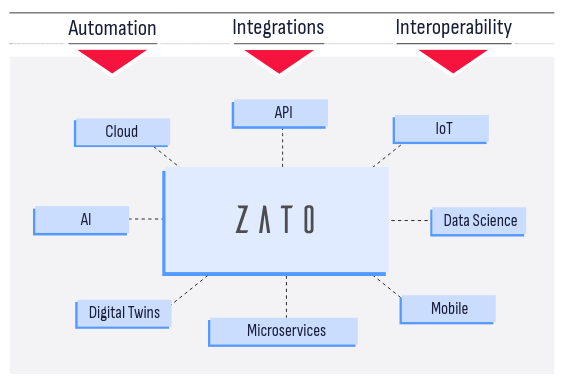SATO Vicinity
How SATO ensured a smooth transition and stronger security features when upgrading a logistics management app
SATO Vicinity develops and sells products that use its global-standard PJM RFID (Phase Jitter Modulation Radio Frequency Identification) technology to track and identify tagged items. Uniquely, PJM RFID can quickly identify large amounts of tagged items with 100% accuracy, even when randomly or tightly packed. A subsidiary of electronics manufacturer SATO Global, SATO Vicinity builds high-end, customized applications for customers worldwide from industries including healthcare, blood and pathology, and wholesale diamonds.
The challenge
Migrating an existing product to new technology with advanced security requirements.SATO Vicinity developed its Assure application to help hospitals manage the process of receiving and tracking orthopedic implants used in surgery. Assure was originally built using Adobe Flash, and when Adobe announced it was discontinuing support for Flash, SATO Vicinity decided to rebuild Assure using new technology.
SATO Vicinity needed to ensure a seamless and timely transition between technologies from the users' perspective. Any disruption to Assure's availability or efficiency could impact hospitals' ability to perform planned surgeries, reducing operational efficiencies and affecting patient care.
SATO Vicinity also wanted to use the opportunity to further strengthen Assure's security features. Cybersecurity is extremely important for hospitals because of their commitment to safeguarding patient data.
Rather than communicating directly with hospital IT systems, Assure uses email to send information and status updates to staff about orthopedic implant orders they have placed.
The solution
Using Zato sped up development time and helped meet critical security requirements.SATO Vicinity decided to rebuild Assure using the Zato platform for its backend and JavaScript for the user interface. The company was already using Zato for several other applications requiring secure and often highly complex integrations. And they had built a strong working relationship with the Zato Source team.
The design and implementation process was straightforward, apart from SATO Vicinity hitting a stumbling block in upgrading Assure's single sign-on (SSO) module.
To overcome this, Zato Source developed a new custom feature in Zato to enable user credential authorization using hospital staff's email addresses - a crucial requirement.
Thanks to Zato Source's support and Zato's flexible configuration options, SATO Vicinity delivered the new version of the app, Assure 2, on time. Meeting the deadline was especially important as SATO's customers include government agencies responsible for large networks of public hospitals.
The outcome
The updated app works seamlessly and increases peace of mind about security.SATO Vicinity rolled out Assure 2 with minimal disruption for its customers. While the underlying technology has changed com- pletely, everything in Assure 2 works the same as before from the users' perspective.
Behind the scenes, Assure 2's strengthened security features are helping hospitals uphold their commitments to safeguarding patient data and keeping their systems secure.
"We've made it so our customers have more assurances on the security side of things. We've implemented extra security maintenance measures like regular penetration testing. So they have peace of mind about Assure 2's security."
Throughout the development and implementation process, Senior Software Engineer Yan Naing has been impressed with Zato Source's personalized, responsive service and deep expertise.
"I'm really happy with Zato Source's service. They are really responsive, fast, and always willing to help."
